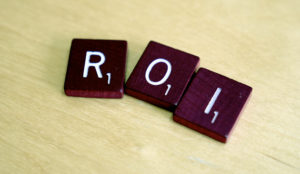 The biggest mistake people make when investing in Real Estate is focusing too much on one or two of the three factors that affect your ROI (return on investment), rather than all three together.
The biggest mistake people make when investing in Real Estate is focusing too much on one or two of the three factors that affect your ROI (return on investment), rather than all three together.
The factors I’m talking about are Cost, Revenue, and Expenses.
If you want to be a successful investor it is important that you not only consider cost, revenue and expenses, but that your figures are reasonably accurate. Let’s take a look at the right way to calculate ROI and some of the mistakes people commonly make along the way.
Cost
When determining the cost of acquiring a property you need to make sure you are considering the entire cost, and not just the purchase price.
The entire cost is made up of the purchase price, renovations or repairs, permits (if applicable), financing fees such as points or underwriting fees, inspections, appraisals, and other reports. Also, while not considered a “cost” necessarily, keep in mind that you will probably need to maintain a cash reserve for maintenance.
Revenue
Revenue is the amount of gross rent you collect from your tenants. One mistake people make is assuming 100% occupancy of a rental property. If a property generates $2,000 per month in rent, and you calculate annual rent by multiplying by twelve months, you will get $24,000 rent.
However, many properties are not rented out year-round. There are days, weeks, or even months between tenants where the property may be vacant. To accurately estimate revenue, you should calculate it by multiplying revenue by the standard occupancy rate for the area and property type.
So if your research shows that you should expect a 95% occupancy rate, then your projected revenue should be $24,000 x .95 = $22,800.
Expenses
Expenses are the recurring monthly and annual costs of owning a property. These will include taxes, interest, maintenance, property management, any utilities that are not paid by the tenant.
Another mistake people make is to ignore those large irregular expenses that inevitably come up. These include things like repaving driveways, new roofs, major repairs, and renovations. Even though these costs aren’t consistent year to year, they should still be accounted for.
For example, let’s say a new roof costs $15,000 and you expect it to last 20 years. $15,000 / 20 years = $750.
So, when running your expense calculations, you would include a $750 annual roof expense allowance.
Calculating ROI
ROI should be calculated by subtracting annual expenses from annual revenue to calculate annual income.
Then, annual income is divided by the total cost of acquiring a property to give you your Rate of Return.
For example,
Let’s say you buy a rental property at a purchase price of $450,000, and a total acquisition cost of $470,000. It rents for $2,000 per month which we calculated to be $22,800 per year.
Let’s say your total expenses are $3,000 per year which gives you an annual income of $19,800.
$19,800/$470,000 = .042 which means you are getting an annual 4.2% Return on Investment.
Mistake
Now let’s look at what we would have ended up with by calculating ROI the wrong way…
If you simply calculate your return by diving rent by price, without taking all of the other above mentioned costs into account, you would get $24,000 / $470,000 = 5.1%.
This would mean that you were overestimating your ROI by over 1%, which is a pretty big deal, especially if you are using leverage to purchase the property.
